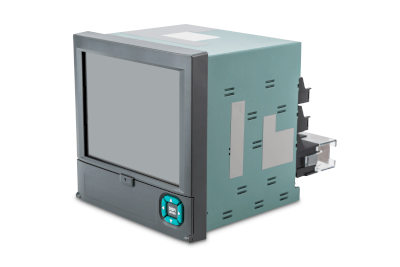What Is a Paperless Recorder?

A paperless recorder refers to recording devices that do not require paper for recording.
In the 20th century, the term “recorder” was commonly used to refer to recording devices that record on chart paper. A movable needle or pen is placed over a stream of chart paper, and what is detected by the needle’s touch is written down. It was not easy to use, as the recorded chart paper had to be saved and refilled.
Today, with the rise of flash memory and other recording devices, chart paper-based recording devices have almost completely disappeared. When we speak of recording devices, we almost always refer to paperless recorders.
Uses of Paperless Recorders
Paperless recorders are one of the most widely used devices for industrial applications.
In process factories, they are used as recorders for process control. It is used to record important data that may be reviewed later. In addition, the installation of a recorder may be mandatory for data that has been agreed upon or exchanged with a local government, etc.
They are often used in infrastructure and other facilities. They are used at power substations, water treatment plants, seismographs in mountainous areas, and other places where people are not always present.
Principle of Paperless Recorders
Paperless recorders can be broadly classified into three parts: detection, display, and recording.
A touch panel is often used for the display section. While displaying continuous values on the panel section, the user can control the zoom in/out and display method. In addition, settings such as span values, units, and sampling rate changes can often be made on the display section.
The detection section is the part used to detect continuous values. In many cases, the type of analog signal can be selected by settings. Often used in industrial applications are temperature measurement with Pt100Ω, voltage signal input of 1-5 VDC, current signal of 4-20 mA DC, etc. Some paperless recorders can record several analog signals simultaneously.
In most cases, semiconductor memory is used for the recording part. A digital signal is written down by applying or not applying an electric charge to the semiconductor that serves as the recording element. The frequency of recording follows a set sampling rate.